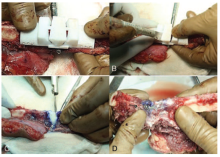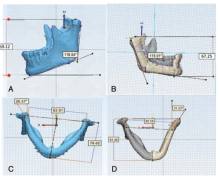Assessing the Role of Virtual Surgical Planning in Mandibular Reconstruction With Free Fibula Osteocutaneous Graft
| Abstract | The role of virtual surgical planning and threedimensional printing in improving the accuracy, precision, functional and aesthetic outcomes have been demonstrated in the literature; however, there is a dearth of studies evaluating these parameters. Objective: This study was carried out at a tertiary care center in North India to assess the accuracy of virtual surgical planning in mandibular reconstruction. Method: All the included patients were preoperatively assessed with a contrast enhanced computed tomography (CECT) of head and neck. Based on the dimensions a patient-specific fibula cutting guide was fabricated by three-dimensional printing. All patients were evaluated with a postoperative CECT at 6 months of followup. The precision outcomes were measured by comparing surgical results with the images of the preoperative virtual planning based on several measurements on the reconstructed mandible such as anteroposterior measurement, transverse measurement, height of the mandible, angle of the mandible, and lateral tilt. The secondary outcomes analyzed were the mean total operative time, mean ischemia time, and morbidity parameters. |
| Faculty |
Prof. Parveen Kalra
|
|
parveenkalra@pec.edu.in
|
|
| Collaborations | PGIMER,Chandigarh |
| More Information | https://doi.org/10.1097/scs.0000000000005538 |








